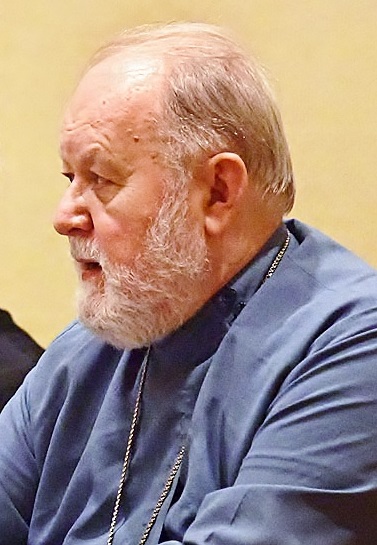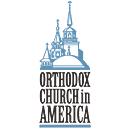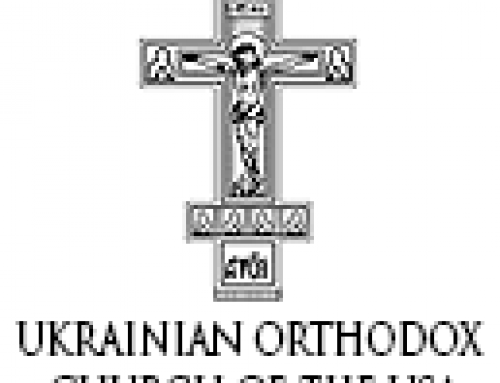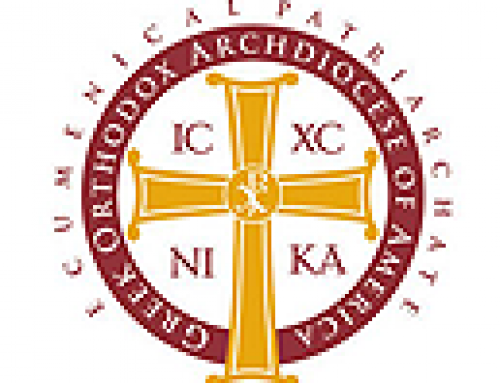This post was originally published on this site

Delivering the keynote address at the 19th All-American Council Banquet on Thursday, July 26, 2018 was Protopresbyter Leonid Kishkovsky, long-time Director of External Affairs of the Orthodox Church in America.
In his address, Father Leonid especially reflected on the ministries of Saints Herman, Innocent and Tikhon and their roles in planting the seeds of what today is the Orthodox Church in America. He challenged his listeners to remain faithful to the Church’s “mission and voice and presence in America” as embodied in the life and labors of these three luminaries.
The text of Father Leonid’s address appears below.
Banquet Address of Protopresbyter Leonid Kishkovsky
19th All-American Council of the Orthodox Church in America
Saint Louis, Missouri
July 26, 2018
Tonight I am bringing a message to us all – to you and to me – from Saint Herman of Alaska. These are the words of Saint Herman to us:
From this day forth, from this very hour and this very minute,
Let us love God above all and seek to accomplish His Holy Will.
Our pilgrimage as Orthodox Christians of North America, our journey as the Orthodox Church in America, starts with the arrival of Orthodox missionary monks in Alaska. Among them was a holy man – a man living a holy life and making a holy witness.
As our journey unfolded through time, the identity of the Orthodox Church in America was revealed. We were tested and tried, we faced times of trouble, we faced crises and achieved successes. Let’s reflect together on our journey. Perhaps we will discover what today constitutes our identity.
We affirm the priority of holiness in the Orthodox mission in Alaska and North America. We affirm the relevance of the holy witness of the Monk Herman for our own witness today in North America. From this day forth, from this very hour and this very minute, let us love God above all and seek to accomplish His Holy Will.
The Monk Herman was a member of the missionary group of eight monks who arrived at Kodiak in 1794. The journey covered more than 7,000 miles and lasted nearly 300 days. It began at Valaam Monastery in Russian Karelia and ended in Kodiak in Russian Alaska. In the midst of primitive conditions and many dangers and hardships, the missionaries endeavored to evangelize the Alaskan natives. Very soon upon arriving at Kodiak the missionaries established the Holy Resurrection Church.
The ruling authority in Russian Alaska was the Russian-American Company, whose policy towards the natives was harsh. The missionaries tried to defend the natives. The Monk Herman was loved by the natives for his humility and compassion. Although he did not learn the language of the native people, the language of love and respect and tender care won the hearts of the Aleuts. Seeking solitude as a hermit and desiring to distance himself from the ruling authority, the Monk Herman moved to Spruce Island, off the Alaskan mainland. He died in 1836 at the age of 81, having served the mission and his beloved Aleuts for 43 years.
The sanctity of the Monk Herman was affirmed in his canonization in 1970, less than half a year after the granting of autocephaly to the Orthodox Church in America. The remains of the Monk Herman were transferred from Spruce Island to the Holy Resurrection Church in Kodiak. According to the accounts of many witnesses the services of the canonization were full of light and joy. The participation of Archbishop Paavali of Finland in the canonization symbolized the connection of Saint Herman to Valaam Monastery. The Archbishop was himself a monk of Valaam before Finland lost part of Karelia and with it Valaam Monastery to the Soviet Union.
The story of the Alaskan Mission is a story which includes martyrdom, hardships in sea travel, dangers in the wilderness – an authentically apostolic history.
The first dimension of our identity is holiness as lived and embodied by Saint Herman. This is the very source of our presence and mission in North America. It is both a gift to be treasured, and a challenge to be fulfilled in our own life and witness.
The second dimension of our identity is the missionary zeal and evangelistic outreach embodied in the life of Saint Innocent Veniaminov.
The future great missionary came to Alaska in 1824 as a 27-year-old priest with his wife and children, serving first in Unalaska and then in New Archangel (today’s Sitka). Father John came because he heeded the call of the Church to bring the Good News of Christ to the Alaskan native people. He had real gifts as an ethnographer and linguist, an explorer and inventor.
While on a visit to Russia in 1839 Father John was widowed. He accepted monastic tonsure with the name Innocent in 1840, and in the same year was consecrated as Bishop to oversee Alaska and part of Siberia – a vast diocese. When the Hieromonk Nicholas (Kasatkin) traveled to Japan in 1860-1861, an unexpected winter delay in the Russian Far East allowed him to meet and converse at length with Archbishop Innocent. This encounter was decisive in providing guidance and perspective to Father Nicholas for his apostolic labors in Japan. Thanks to Archbishop Innocent, Father Nicholas understood the importance of learning the Japanese language and working on the translation of holy scripture. Putting this advice into practice, when Archbishop Nicholas of Japan died in 1911 he left a vigorous Orthodox Church with Japanese priests and catechists, with translations of holy scripture and divine services, with an expanding network of parishes and mission stations, and deep respect in the Imperial Court and among the Japanese people.
The sale of Alaska to the United States in 1867 elicited a written comment by Archbishop Innocent. Rumors had reached him that he was hostile to the sale of Alaska. Seeking to correct the record, he wrote to the Ober Procurator, the lay chief administrator of the Holy Synod appointed by the Imperial Government, with the following points.
- The sale of Alaska to the United States is a providential step, opening the United States to Orthodox mission.
- The current bishop in Alaska should be called back to Russia, and should be succeeded by one who speaks English
- The episcopal see should be transferred from New Archangel (Sitka) to San Francisco.
- Allow the bishop to ordain to the priesthood converts from among American citizens.
- Allow the bishop and all clergy to celebrate the divine services in English, for which purpose the services must be translated into English.
- Use English rather than Russian as the language of instruction in schools established in San Francisco and elsewhere to prepare people for ordination and missionary work.
In 1868, Innocent was elected Metropolitan of Moscow, serving as de facto first hierarch of the Church of Russia until his death in 1871. He persevered to the end of his life as an advocate and visionary of Orthodox Mission.
Metropolitan Innocent was canonized as a saint in 1977 by the Church of Russia at the request of the Holy Synod of the Orthodox Church in America.
The story of Metropolitan Innocent is vivid and colorful, giving us a sense of the missionary vocation of the Orthodox Church. Many others played their part in the evangelizing of the peoples of Alaska and in bringing the Orthodox Faith to North America. A shining example of the apostolic mission in Alaska is the Holy Priest Yakov Netsvetov, whose memory we celebrate today.
The third dimension of our Orthodox identity in America is embodied in the American ministry of Saint Tikhon, serving as bishop and finally as archbishop in America from 1898 to 1907. This was a time to continue the Orthodox missionary vocation, a time to welcome and give pastoral assistance to arriving immigrants and their church communities in the United States and Canada, a time to nurture a united Orthodox Church with a culturally and linguistically diverse population.
The ministry of Bishop Tikhon was remarkably varied and yet consistent, modest and patient and yet inspired. His gifts were recognized, as is evident in his elevation to Archbishop in 1905, and his eventual election as Patriarch of Moscow in 1917. Just to identify his accomplishments one by one is also to lift up his vision and its relevance to our identity.
- Transferred episcopal see from San Francisco to New York.
- Blessed Isabel Florence Hapgood, a lifelong member of the Protestant Episcopal Church and renowned translator, to make an English translation of the divine services.
- Welcomed immigrants from the Middle East and Eastern Europe.
- Established new parish communities for the immigrants.
- Established seminary in Minneapolis.
- Established St. Tikhon’s Monastery in South Canaan, Pennsylvania.
- Encouraged the active participation of clergy in making decisions for the missionary diocese.
- Provided for election of Raphael Hawaweeny as Bishop for the Arabic speaking communities.
- Provided for appointment of an auxiliary bishop for Alaska.
- Welcomed the cultural and linguistic pluralism of Orthodoxy in North America by envisioning a united Orthodox Church, with Arabic, and Serbian, and Greek communities led by Arabic and Serbian and Greek bishops.
- This pluralism was obviously open to Romanians, Albanians, Bulgarians, and others, as needs required.
- Affirmed the openness of the Orthodox Church to dialogue with other Christian bodies.
- Convened the first All American Council in 1907, providing for the full participation of clergy and lay delegates.
- Described the future of Orthodoxy in America, officially reflecting on future autonomy and even autocephaly.
When he was elected Patriarch of Moscow, in the midst of the violence of the Communist Revolution, it was clear to the new patriarch and many others that the road ahead for the Church of Russia was the way of the cross, the way of martyrdom and suffering. Saint Tikhon was canonized by the Russian Orthodox Church in 1989.
For our Church in America, the impact of Revolution in Russia was felt in the loss of contact with the Russian Orthodox Church. The support from Russia which the Church in America had enjoyed was gone, creating severe budgetary challenges. Among many other losses, the Seminary had to be closed. There was no theological education available until the opening of Saint Vladimir’s Seminary and Saint Tikhon’s Seminary in 1938. Slowly, in the middle of the 20th century, our Church, then called the North American Metropolia, regained its footing and its sense of mission. One example was the creation of suburban parishes with divine services in the English language. By the 1960s the Moscow Patriarchate understood that the time for claiming jurisdiction over the Metropolia had passed. And the Metropolia, appealing to the Patriarchate of Constantinople to show leadership in creating a pan-Orthodox unity in America, was told that the problems of the Metropolia could be resolved only with Moscow. This, in turn, brought about the conversations and negotiations that led to the granting of autocephaly to the Orthodox Church in America in 1970.
For some, the autocephaly has become an abstraction, a technicality, a canonical and perhaps dispensable detail. In reality, the autocephaly of the Orthodox Church in America confirms the authenticity of the Orthodox Church in America’s mission and voice and presence in America. Our mission is not to be an embassy of other countries or cultures. Our mission is to be an embassy of the Orthodox faith in America and to America.
We obviously still live in a time of Orthodox pluralism in North America. Yet we are faithful to the vision of holiness, mission, and unity handed down to us by those who came before us. We live humbly in peace and harmony with Orthodox brothers and sisters who belong to other Orthodox churches. Yet we boldly affirm a vision of common purpose and unity to which all Orthodox are called.
This All-American Council has “For the Life of the World” as its guiding theme. When Father Alexander Schmemann wrote his reflections under this title he was preparing to speak to a student conference and was bringing the Orthodox faith, the Orthodox understanding of the sacraments, and indeed the Orthodox worldview to an audience which knew little about Orthodoxy. It is remarkable that this book quickly became popular and meaningful to all manner of readers – both Orthodox and not Orthodox, English-speaking and (through numerous translations of the book) those speaking in many other languages. The book and its teaching and insights remain popular and meaningful around the world. While the book is a personal theological and liturgical reflection of Father Alexander, it brings to many the world over the living voice of the Orthodox Church in America.
The joyful eucharistic vision shared with us by Father Alexander is a way of summing up the journey of Orthodoxy in America and opening the road to the future. The holiness of Saint Herman at the foundation of the Orthodox mission in Alaska, the missionary outreach extended to the “ends of the earth” by Saint Innocent, the pastoral faithfulness of Saint Tikhon – all this is offered by us to God “on behalf of all and for all” in the Divine Liturgy, the Liturgy in which we confess that Jesus Christ “gave Himself up for the life of the world.” Furthermore, this eucharistic vision orients us to the second coming of the Lord, leads us to the peace, joy, and love of the Kingdom of God.
The last words spoken in church by Father Alexander Schmemann, a matter of days before he died, were words of thanksgiving on Thanksgiving Day in 1983. This final sermon offered “ourselves and each other and our whole life” to God in a hymn of thanksgiving. With some additions appropriate to our gathering in Council, let us make these words our own here and now as our common hymn of thanks.
Thank You, O Lord!
Everyone capable of thanksgiving is capable of salvation and eternal joy.
Thank You, O Lord, for having accepted our Eucharist, which we offered to the Holy Trinity, Father, Son, and Holy Spirit, and which filled our hearts with the joy, peace and righteousness of the Holy Spirit.
Thank You, O Lord, for having revealed Yourself unto us and given us the foretaste of Your Kingdom.
Thank You, O Lord, for having united us to one another in serving You and Your Holy Church.
Thank You, O Lord, for having helped us to overcome all difficulties, passions, temptations and restored peace, mutual love and joy in sharing the communion of the Holy Spirit.
Thank You, O Lord, for the sufferings You bestowed upon us, for they are purifying us from selfishness and reminding us of the “one thing needed:” Your eternal Kingdom.
Thank You, O Lord, for having given us this country where we are free to worship You.
Thank You, O Lord, for this Council, our dioceses, our parishes and missions, our monastic communities, and our seminaries where the name of God is proclaimed.
Thank You, O Lord, for our families: husbands, wives and, especially children, who teach us to celebrate Your holy name in joy, movement and holy noise.
Thank You, O Lord, for everyone and everything.
Great are You, O Lord, and marvelous are Your deeds, and no word is sufficient to celebrate Your miracles.
Lord, it is good to here! Amen.
- Watch a video clip [toward the end] of Protopresbyter Leonid’s address.
- Listen to the audio recording from Ancient Faith Ministries.



